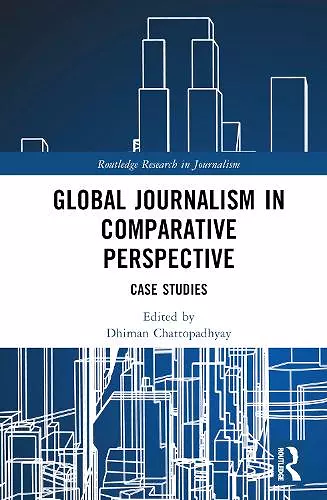Global Journalism in Comparative Perspective
Case Studies
Format:Hardback
Publisher:Taylor & Francis Ltd
Published:13th Feb '24
Currently unavailable, and unfortunately no date known when it will be back

This book explores how journalism is practiced around the world and how there are multiple factors at the structural and contextual level shaping journalism practice.
Drawing on case studies of how conflicts, pandemics, political developments, or human rights violations are covered in an online-first era, the volume analyzes how journalism is conducted as a process in different parts of the world and how such knowledge can benefit today's globally connected journalist. A global team of scholars and practicing journalists combine theoretical knowledge and empirically rich scholarship with real-life experiences and case studies to offer a storehouse of knowledge on key aspects of international journalism. Divided into four sections – journalistic autonomy, safety, and freedom; mis(information), crises, and trust; technology, news flow, and audiences; and diversity, marginalization, and journalism education – the volume examines both trends and patterns, as well as cultural and geographical uniqueness that distinguish journalism in different parts of the world.
This volume will be of interest to students and scholars of journalism, media studies, and mass communication, as well as practicing journalists who want to report globally and anyone interested in gaining a foundational understanding of or researching journalism practices around the world.
Through a ground-breaking exploration of global journalism in comparative perspectives, the current book offers a diverse set of case studies on the challenges that journalists face in different situations across cultures. This includes work from leading scholars addressing four major subdomains: Journalistic Autonomy, Safety, and Freedom; (2) Mis(information), Crises, and Trust; (3) Technology, News Flow, and Audiences; and (4) Diversity, Marginalization, and Journalism Education. The organizing framework brings together voices from practitioners and scholars--who live and work in different parts of the world – into a well-integrated whole. As such, the book can benefit journalism students not just in the U.S., but elsewhere too. This volume should thus provide a helpful resource for teaching and research in the fast-moving global journalism context.
David Atkin, Professor, Department of Communication, University of Connecticut.
The volume brings together interesting perspectives from around the world on some of the most pressing issues facing journalism today. Its emphasis on empirically grounded case studies of journalistic practices in the Global South is noteworthy. While engaged with the impact of emerging technologies on newsmaking as a profession and an industry, the chapters also shed light on the evolving trajectories of print and broadcast media, which remain a significant force in the media markets of Asia, Africa, and Latin America. Media scholars and practitioners everywhere will find it a valuable read.
Saif Shahin, Assistant Professor, Department of Culture Studies, Tilburg University, The Netherlands
The timeliness of this book cannot be overstated, especially in the current post-pandemic world. This book also focuses on the rising tide of state surveillance and corporate control on the one hand, and the media’s capitulation to state power on the other hand. Another aspect I find is the significant contextualization of practice in various nations of both the global south and so-called developed nations. The book also offers great insights into journalism practice and the learning of journalism in various national contexts. Compiling such a volume is a humongous task, and I applaud the editor for this project.
Ujjwal K Chowdhury, Strategic Adviser and Professor, Daffodil International University, Dhaka, Vice President, Global Media Education Council
ISBN: 9781032351698
Dimensions: unknown
Weight: 453g
252 pages